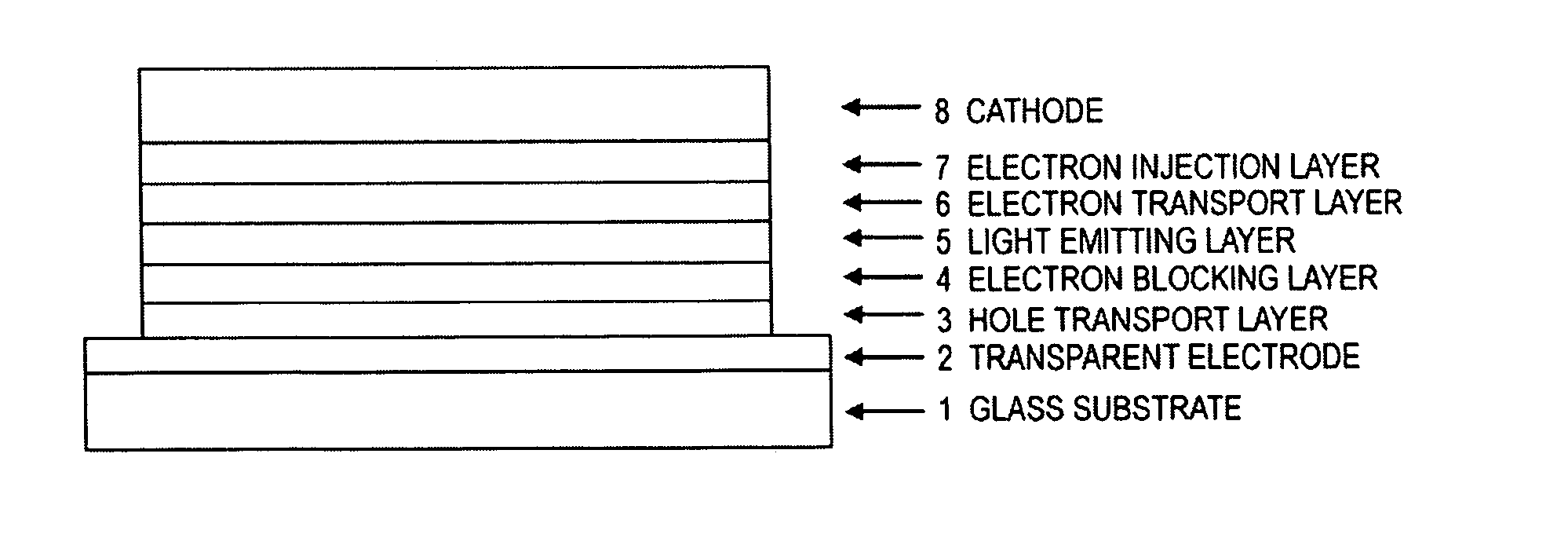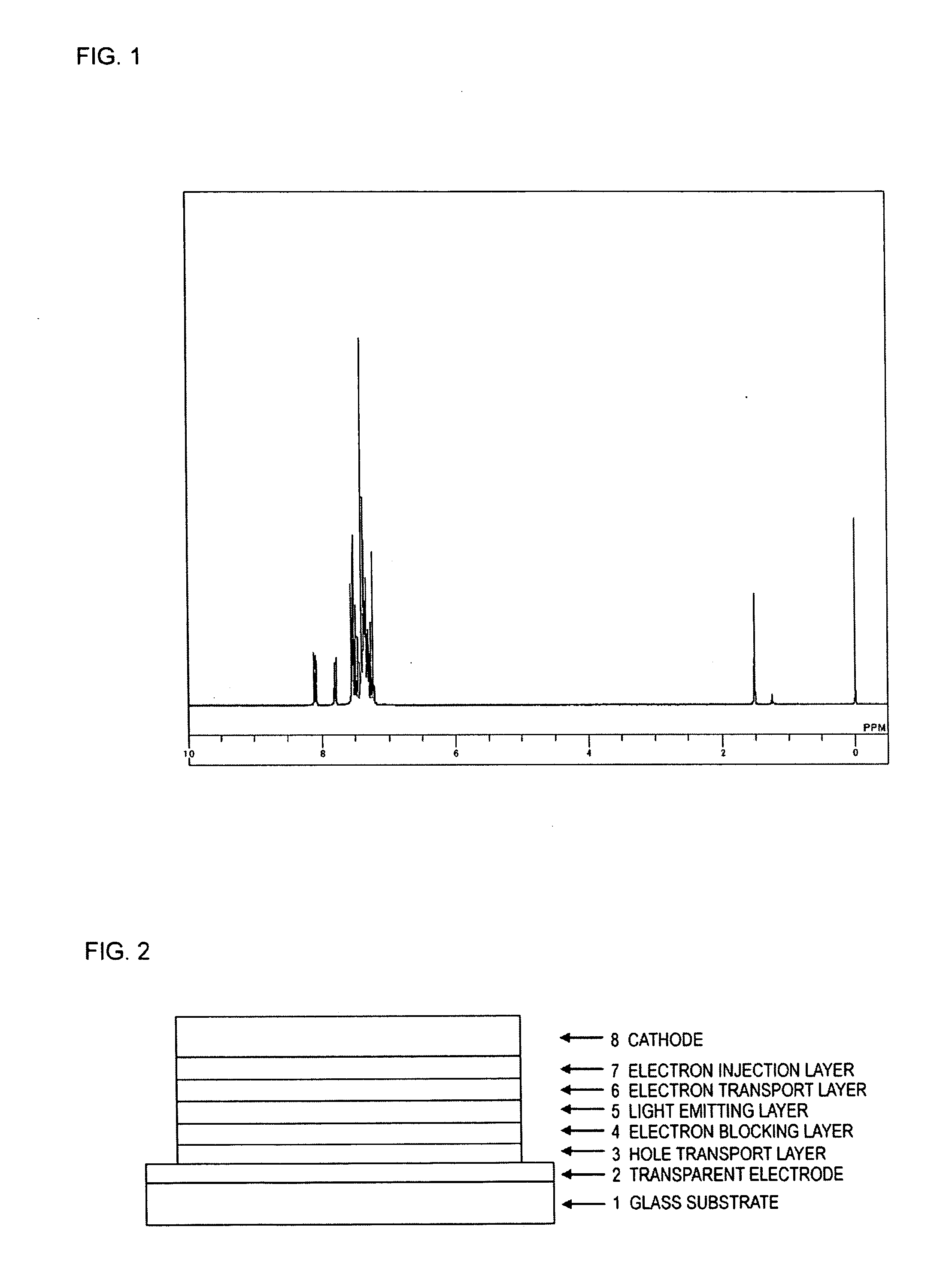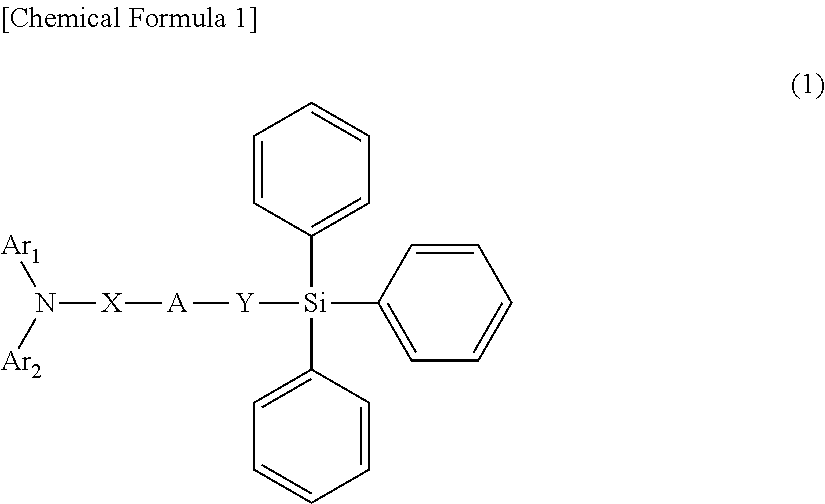Compound having triphenylsilyl group and triarylamine structure, and organic electroluminescent device
a triarylamine and grouping technology, applied in the direction of luminescent compositions, thermoelectric devices, organic chemistry, etc., can solve the problems of poor stability in the thin-film state and inability to obtain device characteristics, etc., to achieve high luminance, low driving voltage, and high luminous efficiency
- Summary
- Abstract
- Description
- Claims
- Application Information
AI Technical Summary
Benefits of technology
Problems solved by technology
Method used
Image
Examples
example 1
Synthesis of 9-[4-(carbazol-9-yl)phenyl]-9-[4-(triphenylsilyl)phenyl]-9 H-fluorene (Compound 25)
[0057]27.0 g of 9,9-bis(4-iodophenyl)-9H-fluorene, 8.0 g of carbazole, 1.5 g of a copper powder, 13.1 g of potassium carbonate, 0.7 ml of dimethyl sulfoxide, and 200 ml of o-dichlorobenzene were added to a reaction vessel under a nitrogen atmosphere, heated, and stirred at 160° C. for 2 hours. The mixture was allowed to cool to room temperature, heated again after adding 300 ml of toluene, and stirred at 80° C. for 1 hour. The insoluble matter was removed by filtration, and the filtrate was concentrated under reduced pressure to obtain a crude product. The crude product was then purified by column chromatography (carrier: silica gel, eluent: hexane / chloroform) to give a white powder of 9-[4-(carbazol-9-yl)phenyl]-9-(4-iodophenyl)-9H-fluorene (12.2 g; yield, 42%).
[0058]10.0 g of the 9-[4-(carbazol-9-yl)phenyl]-9-(4-iodophenyl)-9H-fluorene, and 500 ml of methyl-t-butyl ether were charged in...
example 2
[0061]The melting point and glass transition point of the compound of the present invention were determined using a high-sensitive differential scanning calorimeter (Bruker AXS, DSC3100S).
Glass transitionMelting pointpointCompound of Example 1 of339° C.142° C.the present invention
[0062]The compound of the present invention has a glass transition point of 100° C. or more, and a stable thin-film state.
example 3
[0063]A 100 nm-thick vapor-deposited film was fabricated on an ITO substrate using the compound of the present invention, and the work function was measured with an atmospheric photoelectron spectrometer (Riken Keiki Co., Ltd., AC-3).
Work functionCompound of Example 1 of the5.80 eVpresent inventionCBP6.00 eV
[0064]The compound of the present invention thus has a preferable energy level compared to the CBP commonly used as the host compound of the light emitting layer.
PUM
| Property | Measurement | Unit |
|---|---|---|
| external quantum efficiency | aaaaa | aaaaa |
| speed | aaaaa | aaaaa |
| temperature | aaaaa | aaaaa |
Abstract
Description
Claims
Application Information
 Login to View More
Login to View More - R&D
- Intellectual Property
- Life Sciences
- Materials
- Tech Scout
- Unparalleled Data Quality
- Higher Quality Content
- 60% Fewer Hallucinations
Browse by: Latest US Patents, China's latest patents, Technical Efficacy Thesaurus, Application Domain, Technology Topic, Popular Technical Reports.
© 2025 PatSnap. All rights reserved.Legal|Privacy policy|Modern Slavery Act Transparency Statement|Sitemap|About US| Contact US: help@patsnap.com



